Tag Archive: patterns
November 6, 2018
“Community exists when people who are interdependent struggle with the traditions that bind them and the interests that separate them so they can realize a future that is an equitable improvement on the past.”
-Carl Moore (quoted by Dr. Ceasar McDowell)
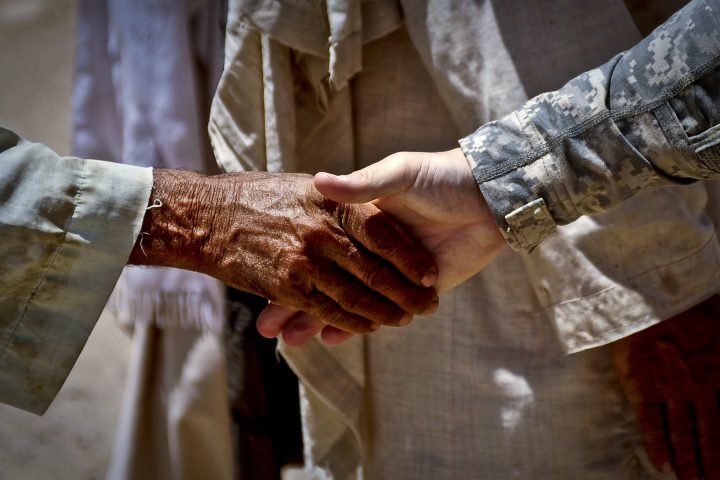
A couple of weeks ago I attended a gathering of network thinkers and doers pulled together by Steve Waddell and Diane J. Johnson, on behalf of the Emerging Network Governance Initiative. Our time together was designed for us to (1) get to know one another better and our respective work (because that’s what network weavers do) and (2) explore possibilities for collaboration to bring different network processes and forms of governance to bear at various scales in the face of the struggle/failure of traditional government to hold and do justice to demographic complexity and address a variety of social and environmental issues.
We spent some time early on unpacking the words “emergent,” “network” and “governance.” While we did not come to final agreement on set definitions, here is some of what I took from those conversations.
Emergent and emergence refer to the dynamic in networks and in life in general through which novelty arises in seemingly unexpected ways.
What is emergent is not planned per se, but rather surfaces through complex interactions between parts of or participants in systems.
Read More
October 7, 2016
 In light of a recent conversation with Jana Carp, an academic who has studied the underlying principles of the “slow movement” and how they connect to sustainability, place-making and livabily, I am revisiting, revising and reposting the piece below. Jana and I were connected by a mutual colleague with the Fire Adapted Communities Learning Network, given our mutual interests in public engagement, community-building and sustainability (inclusive of justice), and had an interesting conversation about slowness and networks.
In light of a recent conversation with Jana Carp, an academic who has studied the underlying principles of the “slow movement” and how they connect to sustainability, place-making and livabily, I am revisiting, revising and reposting the piece below. Jana and I were connected by a mutual colleague with the Fire Adapted Communities Learning Network, given our mutual interests in public engagement, community-building and sustainability (inclusive of justice), and had an interesting conversation about slowness and networks.
At one point, the question came up as to whether networks might cut against slowness, especially when the emphasis is on rapid growth, diffusion, and trans-local connections. My thought at the time was that this certainly could be the case, and that is why it is important to think about both the breadth and depth dimensions of networks, as well linking different scaled networks (local, regional, global). The importance of networks for social change can certainly reside in their reach and rapid scaling. Their potential also resides in the nature and quality of connection, how deep the ties that bind are and what they help to create and circulate. And this brought me back to these reflections on how to think about “social velocity” in networks and collaborative work …
My friend Joel Glanzberg is a constant source of provocation and insight. The way he sees the world, through a living systems and pattern-seeking lens, is not only refreshing but unnerving in that it is evident how simultaneously critical and rare his perspective is. Joel is great at helping me and others to see beyond objects and structures to underlying patterns and processes, and how these are what animate living systems. Read More
July 23, 2014
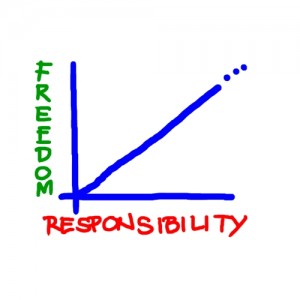 There is growing awareness that current organizational structures can breed irresponsibility. That is, arrangements are created where people are less able to be responsive in helpful ways. This happens, for example, when accountability is bottlenecked in hierarchies and decision-making is distanced from where the action is most timely and relevant. Read More
There is growing awareness that current organizational structures can breed irresponsibility. That is, arrangements are created where people are less able to be responsive in helpful ways. This happens, for example, when accountability is bottlenecked in hierarchies and decision-making is distanced from where the action is most timely and relevant. Read More
June 26, 2014
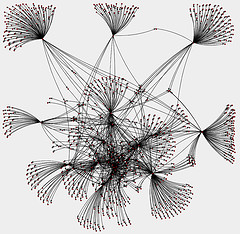
Picking up on the spirit of yesterday’s post about asking “beautiful questions” and inspired by a staff challenge to articulate lines of inquiry stemming from IISC’s core lenses, I offer this post. It distills some of the underlying questions that adopting a “network lens” inspires for social change work. Please add, adjust, edit, and rift!
- How does your organization/network/change initiative strive to add value to (rather than duplicate) existing efforts? What do you do best, and how might you then connect to the rest?
- What are you doing to support and strengthen connections and alignment within and beyond your organization/network/change initiative?
Read More
May 15, 2014
“A great many people think they are thinking when they are merely rearranging their prejudices.”
― David Bohm

By Vincepal
I have learned a tremendous amount over the last several years from practitioners associated with the Regenesis Group – Carol Sanford, Bill Reed, Joel Glanzsberg, and Pamela Mang. Specifically, they have pushed my own thinking about my own thinking, and how this kind of awareness is key to supporting successful system change. I recommend all readers of this blog to check out the wealth of resources on the Regenesis website. And I want to highlight a blog post from Pamela Mang, a segment of which I have included below, that points to how our dominant ways of thinking can undercut our stated aims. The full post can be found here on the edge:Regenerate site.
“The way we think is shaped by patterns that we’ve been taught or picked up over the course of our lives, patterns that are deeply embedded in our culture and institutions. Over time, these patterns have become increasingly interdependent and self-reinforcing and, most problematic, increasingly habitual because they are invisible to us. If we want to change how we think, the first step must be to make visible the patterns that currently shape our thinking. Only then can we decide which are useful when, and which condemn us to degenerative outcomes. . . . Read More
March 27, 2014
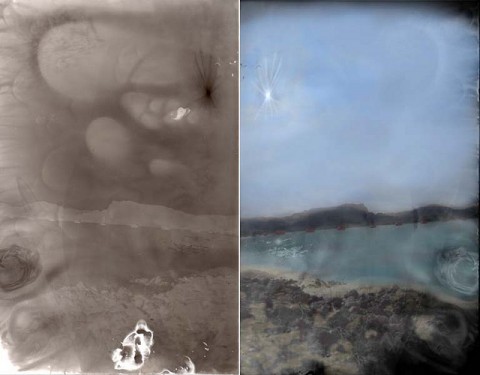
Photo by Crunchy Footsteps
Process can sometimes get a bum rap in our work, as in: “I’m not a process person. I’m action-oriented.” This attitude can become a source of considerable frustration, and yet, I get it. Some people are tired of what seems like endless talk that gets them no where. And yet to translate this kind of seemingly circular conversation (what Chris Thompson has referred to as co-blaboration) as “process,” as opposed to action, does a disservice to what is essential to the work of social change. No, I’m not talking (only) about talking. I’m talking about how it is precisely at the level of process that we can make truly profound change. Read More
February 21, 2014
This post is the third in a three part series exploring the question, “Can collaboration be learned?” Part 1 and Part 2 appeared the last couple of days. This is an edited email exchange between Alison Gold of Living Cities, Chris Thompson of The Fund for our Economic Future, and myself. When we last left off, Alison had posed a series of questions about identifying and cultivating the will to collaborate.
On January 27, 2014 12:33 PM, Curtis Ogden wrote:
Alison, I really like your questions and feel like they would be great to take to a wider audience. I will say that I am profoundly influenced by Carol Sanford’s mentoring in all of this, and the belief that personal development is key to evolving our will, moving from a more self-centered perspective to “other” perspective, to understanding the symbiotic nature of different levels of systems. Read More
September 18, 2013
“Don’t search for the answers, which could not be given to you now, because you would not be able to live them. And the point is to live everything. Live the questions now. Perhaps then, someday in the future, you will gradually, without even noticing it, live your way into the answer.”
-Rainer Maria Rilke, 1903 in Letters to a Young Poet

|Photo by muffinn|http://www.flickr.com/photos/26445715@N00/3092761353/in/photolist-5HidcB-7fk9W4-7fk9YM-7fp2H9-7fp3vd-7ueieU-fhxQiW-8Vb4qT-8Vb3LB-8Ve8tA-8Ve8Cf-8Ve8dS-9ifHmE-9icD5Z-defTUR-d8TvrY-d8TDNN-8RZpMu-d8ToLu-daa2HF-8RAUDQ-7FG4oc-d8SYJo-da9Uxx-da9WRc|
In their article, “Using Emergence to Scale Social Innovation,” Margaret Wheatley and Deborah Frieze highlight the critical role of self-organization, spontaneous and purposeful arrangement and action without formal or “external” management, in facilitating social change. As self-organization occurs in social networks, emergent and unexpected phenomena flow through the strength and flexibility of connections between people and groups. As Wheatley and Frieze note, these emergent phenomena tend to result in “a powerful system that has many more capacities than could ever be predicted by analyzing the individual parts.” This is part of what constitutes the “intelligence” and resilience of networks. This capacity flows naturally when conditions are ripe for individuals to freely find each other and create. Read More
August 7, 2013

At IISC we like to define the success of collaborative change efforts in multi-dimensional ways. In particular, we make reference to results, process, and relationship elements. Results are what we typically think of as the “measurable” outcomes of a change undertaking – policy change, livable wage, job creation, healthier communities, etc. Process has everything to do with the how of the work – how we approach our change efforts, the steps we take, how work is shared and by whom, and with what spirit. Relationship is about both the quality of interpersonal connections as well as how people relate to the work itself. From what one might call an “old school” mindset, there is an assumption that process and relationship are only important insofar as they help to achieve results. Read More
September 26, 2012
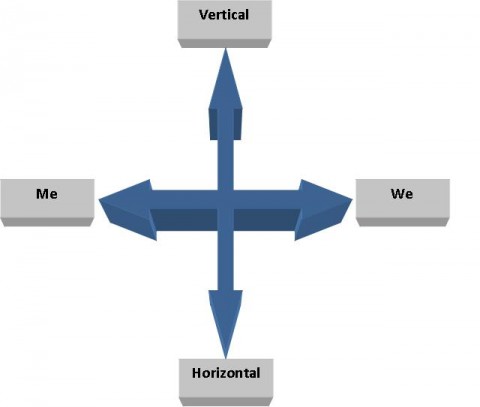
I want to tip my hat to mentors and thought partners, both near and far, for fueling my thinking around the topic of this post – thanks to Carol Sanford, Richard Hawkes and Tom Lombardi at Growth River, Glenda Eoyang, Richard Barrett, and my IISC colleague Gibran Rivera. There is much discussion in the social sectors these days about the need to be more fearless, to take risks, to fail early, to be innovative and vulnerable. Influenced by my colleagues, I like to frame all of this as being about our need to think and act more “vertically,” that is, with an evolutionary thrust, in the direction of personal and systemic growth and development, opportunity generation, and a sense of accountability to a greater community or “we.” Read More
April 11, 2012
“Life is irresistably organizing. Life opens to more possibilities through new patterns of connection.”
M. Wheatley & M. Kellner-Rogers, A Simpler Way

|Photo by Kelly B|http://www.flickr.com/photos/foreverphoto/147660610|
The late David Bohm pointed out the lost potential of quantum physics as he saw it being assimilated by a traditional and very mechanical mindset that wanted to make it another instrument of control, prediction, and quantification. For him the power of the field was much more subtle, qualitative, and lay in the understanding that there is an “implicate order” to reality from which form emerges via our thoughts and efforts to make meaning. From Bohm’s perspective, much of what ails us stems from disorganized thought that has us attaching to form, regurgitating and defending our prejudices, as opposed to thinking that embraces the more creative flow of life. As he once expressed it, “Thought is creating divisions out of itself and then saying that they are there naturally.” Read More
March 29, 2012
“A great many people think they are thinking when they are merely rearranging their prejudices.”
~ David Bohm
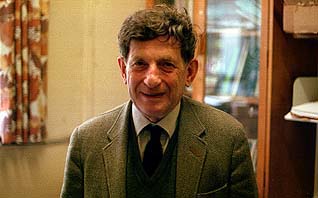
The great theoretical physicist David Bohm was known for his explorations at the intersections of science and mysticism. His writings on the nature of thinking have helped to inform some of the current conversations about deeper sources of innovation that transcend individuals and what typically passes for creativity. His question to all of us is whether we are truly thinking, creating “new sensory orders and structures that form into new perceptions,” or simply recycling old, dysfunctional patterns that are then reflected in the world we physically inhabit.

 In light of a recent conversation with
In light of a recent conversation with 
 There is growing awareness that current organizational structures can breed irresponsibility. That is, arrangements are created where people are less able to be responsive in helpful ways. This happens, for example, when accountability is bottlenecked in hierarchies and decision-making is distanced from where the action is most timely and relevant.
There is growing awareness that current organizational structures can breed irresponsibility. That is, arrangements are created where people are less able to be responsive in helpful ways. This happens, for example, when accountability is bottlenecked in hierarchies and decision-making is distanced from where the action is most timely and relevant. 







